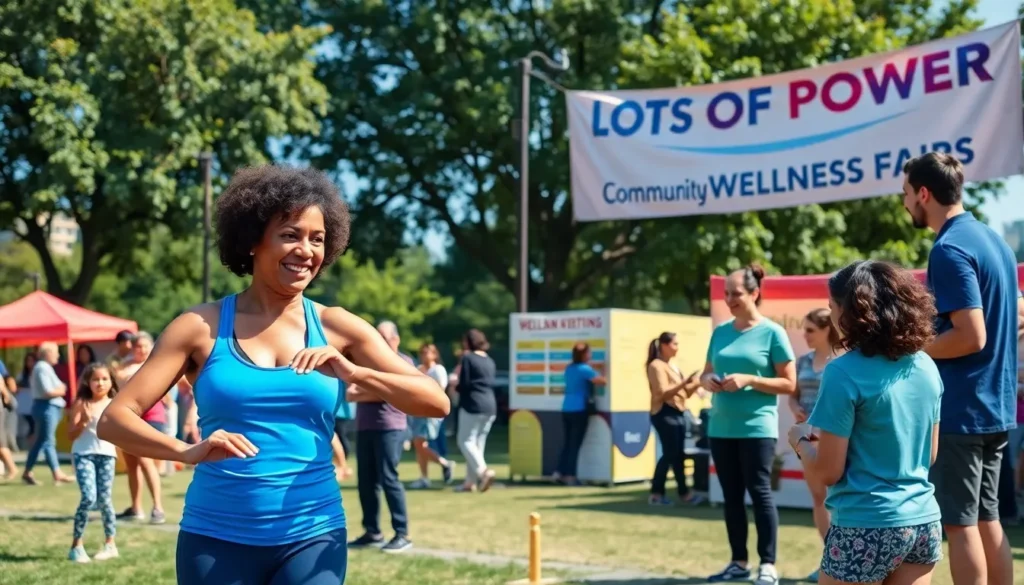In today’s fast-paced world, the concept of community wellness has gained significant traction, fostering an environment where individuals can thrive collectively. The Lots Of Power Community stands at the forefront of this movement, promoting holistic health that goes beyond just physical fitness. By emphasizing emotional, social, and mental well-being, it serves as a model for other communities aiming to enhance their quality of life. This article explores the fundamentals and significance of community wellness, key components for success, and lessons learned from the Lots Of Power Community.
Table of Contents
ToggleUnderstanding Community Wellness

Community wellness encompasses the physical, mental, and social health of the members within a community. Unlike individual health, which focuses solely on personal well-being, community wellness looks at how interconnected relationships and environment affect overall health. Factors such as access to healthcare, social support systems, and communal activities play a vital role in determining the well-being of everyone within that community. An effective approach to community wellness recognizes these interdependencies and seeks to enhance the collective health outcomes.
The Importance of Community Wellness
Investing in community wellness is crucial for a variety of reasons. First and foremost, it leads to healthier lifestyles. With proper access to resources, individuals are more likely to make informed health choices. Also, effective community wellness reduces healthcare costs. Preventive measures, such as wellness programs, can minimize the need for expensive treatments by addressing health concerns before they escalate.
Also, strong community bonds can reduce crime rates and social issues. When individuals feel a sense of belonging and support, they are less likely to engage in harmful behaviors. So, fostering community wellness contributes not only to individual health but also to public safety and societal prosperity.
Key Components of Community Wellness
The core components of community wellness can be categorized into several areas:
- Physical Health: Access to healthcare, fitness facilities, and recreational activities is essential for promoting physical well-being. Communities that prioritize physical health often see reduced rates of chronic diseases.
- Mental Health: Mental wellness initiatives, such as counseling services, workshops, and community discussions, are critical. They help individuals cope with stress and build resilience.
- Social Connections: Creating opportunities for social interactions, like community events or support groups, fosters strong social ties. These connections are vital for emotional support and overall happiness.
- Education: Access to information about health practices, nutrition, and wellness strategies empowers individuals to make informed decisions. Programs tailored to educate various demographics are particularly effective.
- Environmental Wellness: The health of the environment has a direct impact on community wellness. Clean neighborhoods, access to parks, and environmentally friendly practices contribute to a healthier living space.
Implementing Wellness Programs in Communities
To successfully carry out wellness programs, communities must first assess their specific needs through surveys and focus groups. Understanding the unique challenges and demographics helps tailor programs effectively. The next step involves engaging local stakeholders, including healthcare providers, schools, and businesses, to ensure that the initiatives are well-supported and sustainable.
Programs can vary widely. Some may focus on physical fitness, like community walks or yoga classes, while others may center on mental health awareness, providing resources and workshops.
Another effective strategy is to leverage technology, enabling virtual classes or health tracking apps that make wellness more accessible. Promotion of these programs through social media and local media outlets can boost participation and enhance community engagement.
Success Stories from Lots Of Power Community
The Lots Of Power Community showcases numerous success stories that exemplify the impact of focused wellness initiatives. One notable program is their annual Health Fair, where local health services offer free screenings and workshops on nutrition and exercise. This event not only educates residents but also creates a platform for local businesses to promote health-related products and services.
Another incredible success story is the Wellness Champions Program, where volunteers are trained to lead smaller community groups in activities ranging from cooking classes to fitness challenges. Participants report feeling more connected to their neighbors and more motivated to adopt healthier lifestyles. The ripple effect of these initiatives illustrates how community-driven wellness can create enduring change.
Challenges Faced in Promoting Community Wellness
Even though the benefits, promoting community wellness also comes with its share of challenges. Funding is often a significant barrier: many programs rely on grants and donations, which can fluctuate unpredictably.
Another challenge is overcoming varying levels of engagement. Some community members may be resistant to participating in wellness activities due to lack of time, awareness, or interest. So, striking the right balance between incentivizing participation and ensuring inclusivity is crucial.
Also, differing cultural perceptions of health and wellness can lead to misunderstandings or reluctance to engage in programs that may not align with personal beliefs or practices. Addressing these cultural nuances requires careful planning and communication.
Future Directions for Community Wellness Initiatives
The future of community wellness initiatives is promising, with potential enhancements in several areas. One potential direction involves the increased use of technology. Telehealth services are becoming more prevalent, allowing convenient access to healthcare for underserved populations.
Also, collaboration between different sectors, public health, education, and non-profits, can lead to more comprehensive and coordinated efforts in addressing community wellness. As more data becomes available about health outcomes, evidence-based strategies can be developed, ensuring that resources are allocated effectively.
Finally, grassroots movements led by community members themselves can further empower individuals. Encouraging residents to take initiative in their wellness journey fosters ownership and sustainability.
Conclusion
Community wellness is not merely a concept: it is a vital approach to improving the quality of life within a community. As demonstrated by the Lots Of Power Community, focused efforts in enhancing physical, mental, and social health yield substantial benefits. Understanding and addressing the unique needs of a community while overcoming challenges will be crucial for future initiatives. By investing in community wellness, societies can cultivate environments where every individual has the opportunity to thrive.





